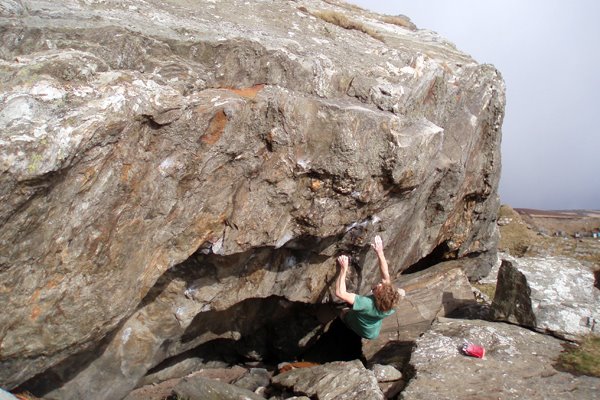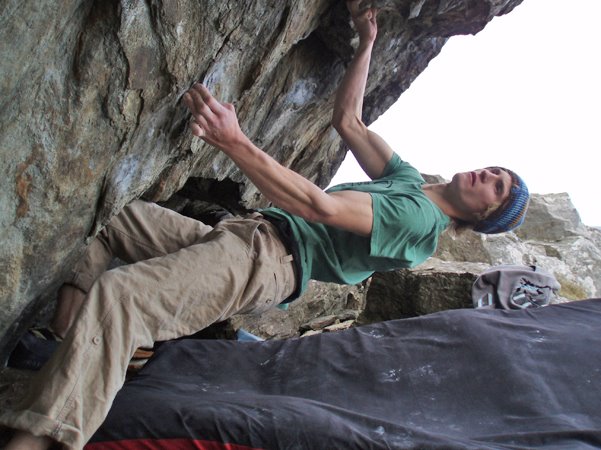
Luke Fairweather has climbed a new variation to Tim Rankin's Kayla, working a different finish to give a new 8a called Twlight Princess.
The problem links the two hardest problems in the Pit Boulder, Kayla (Font 7c+/8a) and the Pit left hand (Font 7b+). Its starts as for Kayla but after reaching the strenuous underclings it break lefts traversing into
the pit left making the last desperate move to the lip (british 7a move). The problem is 'dam awesome' and has taken 6 visits and may be 8a+, the hardest in the North East so far?
He also repeated Tim Rankin's 'Shameless' which he confirmed at a heady Font 7c+. Pic below.
